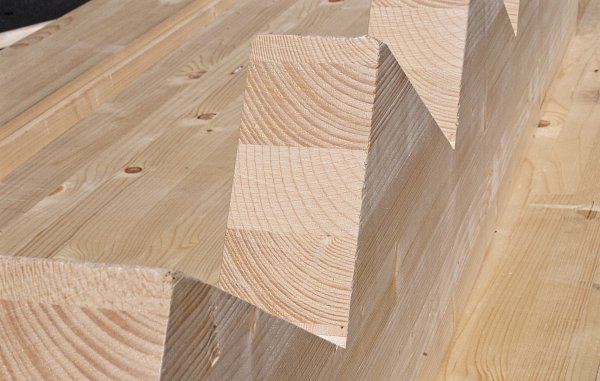BSH
The multi-ply laminated kiln-dried wooden components are a modern construction material, characterized by high bearing capacity and a good dimension stability. An ideal alternative to steel. Variety of dimensions, better structural values than Rough sawn timber or KVH. Lamellas (4 cm thick) are vertically laminated.
TYPICAL DIMENSIONS
Thicknesses: 120 - 1600 mm
Width: 80 - 280 mm
Lenght: 11,95 m
PRODUCTION
The raw material (usually spruce, but can be also larch) is kiln-dried and strength graded. The laminations are cut to the required length and placed on top of each other. To reduce internal stresses the laminates are turned so that the core sides face the same way throughout the cross-section. The outermost laminates are however always turned with the core side outwards. After longitudinal gluing using finger joints the flat sides of the laminates are planed and immediately glued. Then the pressure is applied. The laminates may be bent when the pressure is applied, producing cambered or curved forms.
UTILIZATION
Glued laminated timber elements are designed for statically loaded timber structures, even with the possibility of use in the third service class. In this case, some surface treatment is recommended. The application of glued laminated timber is such as roof trusses, joists, girders, beams, columns, constructions of bridges, footbridges, lookout towers and other external structures.
TREATMENT
Rough sawn timber is kiln-dried to a moisture of 16 % (+– 2 %). Lamellas used in the production of glue laminated construction timber are kiln-dried to a moisture of 8 % (panels), 12 % (BSH, DUO/TRIO) and 15 % (KVH). Kiln-drying also destroys wood pests. As kiln-dried wood is not usually attacked by common wood pest species, European countries have adopted a technical and legislative opinion that such wood does not have to be chemically treated, which is an important step towards greater environmental friendliness of wooden constructions. However, kiln-dried timber can be treated when the customer requires it.





